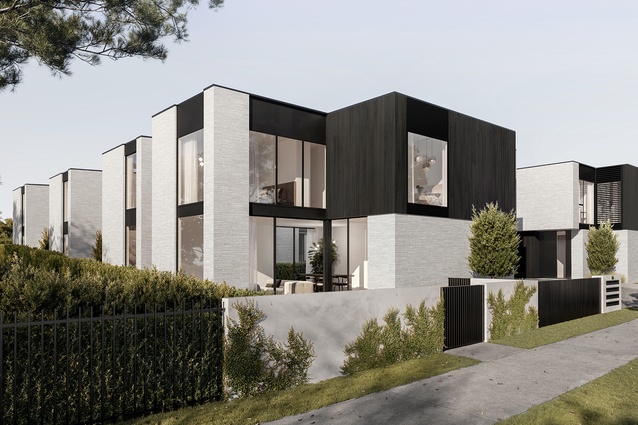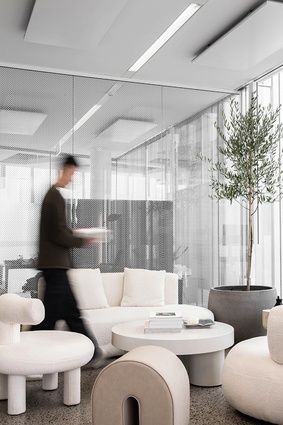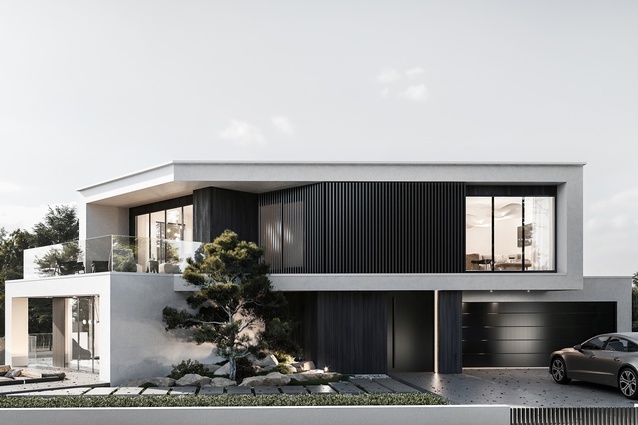The Shape of mid-density to come
Han Chen, director of Shape Architects, has an impressive portfolio of completed residential projects and runs housing developments in East Auckland. Editor, Jacinda Rogers talks to Han about his learnings from both designing and developing mid-density housing.
Jacinda Rogers (JR): Have you noticed any changes in what developers or clients want since the MDRS changes?
Han Chen (HC): I think the intention of most development projects is to try and get the most out of your section. With the introduction of the MDRS and new regulatory provisions, the demand and expectation for greater densification will always follow.
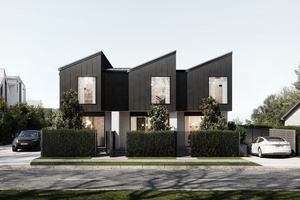
Whilst we regularly help push design densification for our developers, our job as architects during this period is to navigate a fine line, balancing densification demands with what we believe will be a better outcome for not only the built fabric of Auckland, but also the developer themselves.
Quite often we find that cramming as much floor area and building into a site doesn’t always yield the best results. Not only does it make consenting more difficult, but the final product often lacks open space, public amenity, and consideration for urban design principles, all of which are crucial to the real-estate market depending on the area.
(JR): How has the transition been for you and your clients?
(HC): As smooth as it could possibly be given the constant changes to the interpretations. Since the announcement of the MDRS, I’ve held regular meetings every week with experienced planning professionals from multiple practices in Auckland to better understand the rollout of the new provisions.
The complexity of the transition has frustrated all of them. Many developers initially interpreted the MDRS provisions to be applicable to most sections in Auckland, but that has since been corrected to apply only to developments of three units or less, along with a further restriction to remove allowances for any site with a qualifying matter (even if the qualifying matter does not make sense!).
Last month, we had yet another update from Council, to clarify that designations such as the Aircraft Noise overlay — which covers half of Central and South Auckland — are considered as a qualifying matter. Thankfully, we had forewarned our clients to expect ‘interpretation’ changes such as this, as it can dramatically affect their development outcomes and timeframes. I have heard horror stories elsewhere, where projects were one step away from approval, but a full redesign had to be done.
(JR): Do you feel like the market is changing at all in terms of home affordability, desired location, or type of housing?

(HC): Definitely, but it’s very difficult to predict which way the wind will blow. I have noticed, and continue noticing, a steadily increasing supply of 80m2 two-bedroom terraced townhouses with external carparks. This seems to be the most attractive development model (and Shape have completed multiple developments like this), from an investment return point of view.
This model is attractive because it’s the most efficient typology that helps solve the housing crisis and offers newly built homes at the cheapest cost bracket at a time when lending is becoming more difficult. The only thing I question, is at what point does this model become oversaturated?
I have seen this same model being built in more premium locations in Auckland such as Takapuna, Remuera, or Half Moon Bay where the fit is odd, and the neighbourhood character is affected by the densification. In these specific areas, I’d recommend against that development typology. The market in those areas would better suit — and buyers will pay for — more premium standalone homes and experienced developers will know, the margins are similar.
(JR): You wrote a guide on developing and subdividing for Relab recently. How has your journey been with property development?
(HC): Challenging but rewarding. Our practice completes a lot of subdivision projects every year and I also run a few developments myself, so I’m exposed to a lot of the complications that can cause issues.
From protected trees, to flood-prone areas, to service connections, to severely sloped sections, and volcanic rock (to name a few), we’ve dealt with it all. What helps is that we have an experienced network of consultants to call upon, who we get together with to help resolve such issues for our clients. It’s great because at the same time I get to learn principles from another profession outside architectural design, to apply to the next project.
(JR): What advice do you have for anyone interested in starting their first development?
(HC): Don’t try to do everything yourself and trust and invest in the professionals! Subdivision is risky because a lot of things can go wrong, but if you surround yourself with the right team with the right attitude, you can eliminate most — if not all — the complications that may arise, before they start costing big bucks to solve. Subdivision is often a multimillion-dollar investment: treat it as such, work with the right professionals, and let their knowledge and experience guide you.
(JR): Has wearing a developer’s hat fed into your architecture practice at all?
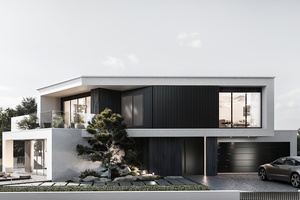
(HC): Definitely. As architects, we strive for beauty, function, and form. As a developer, you must consider profitability, funding, practicality, and cost. Understanding the framework of both perspectives is definitely an eye-opener. Trying to satisfy all of them is by far the most challenging, and quite often we have to find the right balance. That perfect custom Italian brick you looked forward to specifying, might not fit within the scope of the development even though it looks amazing. We spend time researching alternatives, memorising prices per m2, and experimenting with new construction/finishing methods (flush mortar, bagged finish, mortar wash, alternating patterns etc.) that make more cost-effective materials look great.
(JR): Where do you get inspiration from for your townhouses and mid-density builds?
(HC): As architects, I think inspiration can come from a lot of things: clothes, cars, furniture, art as well as — of course — architecture itself. I will forever be inspired by the local projects of veteran architects such as Fearon Hay and Summich Chaplin, as well as some new architectural practices such as Neu and Ema. Australia isn’t short of amazing architects with very refined design palettes, who design buildings that have similar construction techniques to those here in New Zealand.
(JR): What are the most important considerations aesthetically when designing subdivisions or mid-density buildings?
(HC): Balancing the classic form vs. function. With subdivision projects, floor plans need to be very efficiently laid out to make use of every nook and cranny. This often limits the building’s flexibility in its form and expression, so getting this balance correct becomes even more difficult and critical to the project’s success.
(JR): What key elements have led to the success of Shape’s builds?
(HC): Honestly (not to sound cliché), I think it comes from our passion and commitment to each and every project. My team are the most dedicated people on the planet and I’m very lucky and thankful for the culture and energy of the practice we’ve built. When you get the right team and have consultants who care a lot about the project, they will go the extra mile to see it through and make sure the end product is successful for our clients.
(JR): Lastly, how important is it to factor in a lifestyle for inhabitants into mid- to high-density builds?
(HC): Extremely crucial. I think for both architects and developers, we have to remember that each and every project is a built structure that will stand and serve many generations of Kiwis to come. There is a responsibility there to design a product that responds to the ever-changing lifestyles of the owner, and I think developers’ long-term will be rewarded and celebrated for carefully considering the end user, the longevity of the project, and the built fabric of Tāmaki Makaurau.
Han Chen is a Registered Architect and the director of Shape, an architectural design studio, based in Auckland. For more information, or to view their project portfolio, click here.

